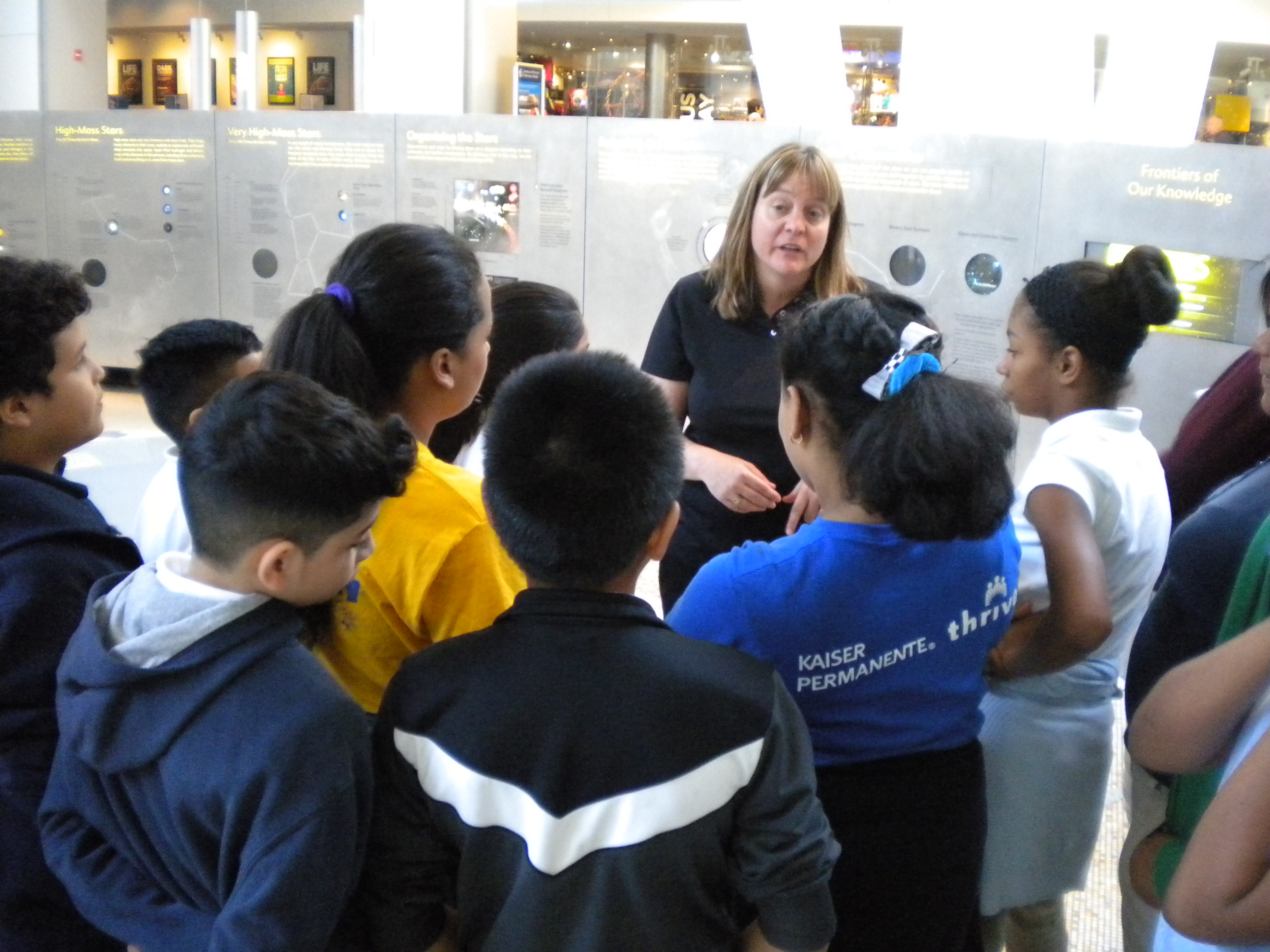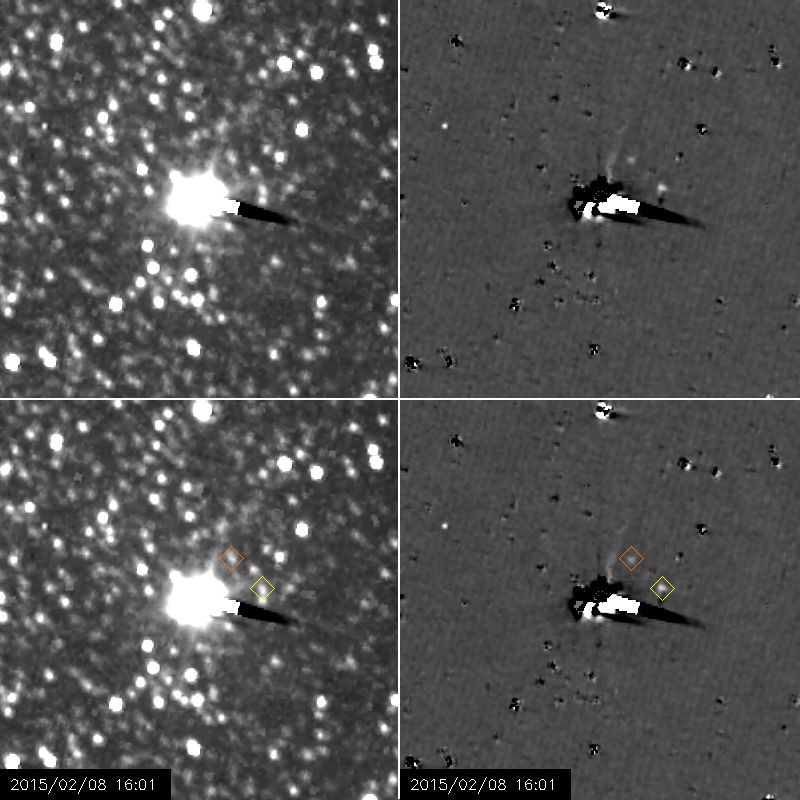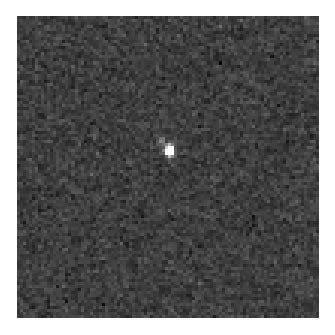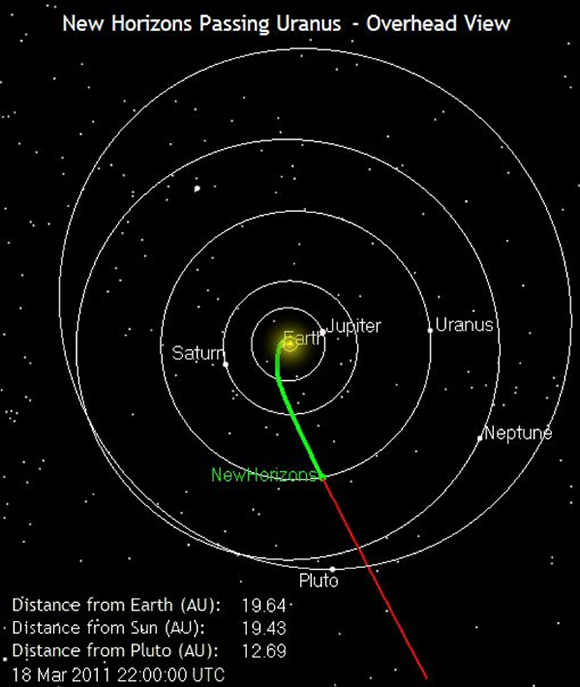Destination Pluto: NASA's New Horizons Mission in Pictures
Pluto-Palooza Cahy Olkin
Cathy Olkin, deputy project scientist for New Horizons, speaks with students during the "Pluto-Palooza" event at the American Museum of Natural History in New York.
Pluto Moons Nix and Hydra
NASA's New Horizons probe sees Nix and Hydra, two of Pluto's five moons, as it continues to close in on the dwarf planet for a July 2015 close encounter. Read the Full Story and See the Video.
Pluto and Charon on Jan. 27, 2015
Pluto and Charon, the largest of Pluto's five known moons, were seen Jan. 27, 2015, by the telescopic Long-Range Reconnaissance Imager (LORRI) on NASA's New Horizons spacecraft.
Comparison of Images of Pluto and Charon
This diagram compares images of Pluto and its large moon Charon, taken in July 2014 and January 2015.
Charon Visible Orbiting Pluto
Charon is visible for the first time in pictures taken by the Pluto-bound New Horizons spacecraft. Image released July 10, 2013. [Read the Full Story]
Pluto and Charon Seen by New Horizons
New Horizons LOng Range Reconnaissance Imager (LORRI) composite image showing the detection of Pluto’s largest moon, Charon, cleanly separated from Pluto itself. The frame on the left is an average of six different LORRI images, each taken with an exposure time of 0.1 second. The frame to the right is the same composite image but with Pluto and Charon circled; Pluto is the brighter object near the center and Charon is the fainter object near its 11 o’clock position. Images released July 10, 2013. [Read the Full Story]
Pluto-bound Spacecraft Spots Its Target
A white arrow marks Pluto in this New Horizons Long Range Reconnaissance Imager (LORRI) picture taken Sept. 21, 2006, marking the spacecraft's first look at its target planet.
Breaking space news, the latest updates on rocket launches, skywatching events and more!
New Horizons Passing Uranus
An overhead view of the New Horizons spacecraft's path across Uranus' orbit.
Jupiter and Io, by New Horizons
This montage of New Horizons images shows Jupiter and its volcanic moon Io, and were taken during the spacecraft's Jupiter flyby in early 2007.
Best Color Image of Jupiter's Little Red Spot
This amazing color portrait of Jupiter’s “Little Red Spot” (LRS) combines high-resolution images from the New Horizons Long Range Reconnaissance Imager (LORRI), taken at 03:12 UT on February 27, 2007, with color images taken nearly simultaneously by the Wide Field Planetary Camera 2 (WFPC2) on the Hubble Space Telescope.

Space.com is the premier source of space exploration, innovation and astronomy news, chronicling (and celebrating) humanity's ongoing expansion across the final frontier. Originally founded in 1999, Space.com is, and always has been, the passion of writers and editors who are space fans and also trained journalists. Our current news team consists of Editor-in-Chief Tariq Malik; Editor Hanneke Weitering, Senior Space Writer Mike Wall; Senior Writer Meghan Bartels; Senior Writer Chelsea Gohd, Senior Writer Tereza Pultarova and Staff Writer Alexander Cox, focusing on e-commerce. Senior Producer Steve Spaleta oversees our space videos, with Diana Whitcroft as our Social Media Editor.










